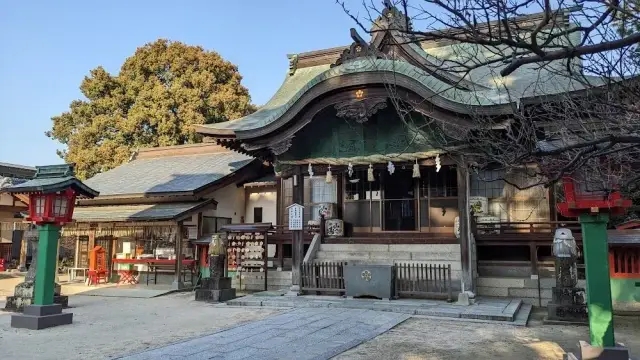https://www.dekitabi.com/itinerary/kurume-essential-temples-tour
Japan is a land steeped in rich history and profound spirituality. Its temples and shrines offer a unique glimpse into the cultural and religious tapestry that has shaped the nation over millennia. Among these revered sites, Suitengu, Daihonzan Naritasan Kurume Temple, Kora Taisha Shrine, and Kitano Tenmangu Shrine stand out for their historical significance and serene beauty. Exploring these sanctuaries provides an opportunity to connect with Japan’s spiritual heritage and experience the tranquility that these sacred places offer.
Suitengu Shrine: A Sanctuary for Safe Childbirth

https://www.dekitabi.com/attraction/suitengu-kurume
Located in the heart of Tokyo, Suitengu Shrine is a Shinto shrine renowned for its dedication to safe childbirth and children’s health. Originally established in Kurume, Fukuoka Prefecture, the shrine was moved to Tokyo during the Edo period. The main deity worshiped here is Amenominakanushi no Kami, along with the goddess Benzaiten, known for bestowing blessings related to water, music, and wealth.
Visitors to Suitengu Shrine are often expectant mothers and families praying for safe deliveries and healthy children. The shrine’s serene atmosphere provides a comforting environment for those seeking divine blessings. The traditional rituals performed here, including the Mizuko kuyo (memorial service for unborn children), reflect the deep spiritual connection between the people and their deities.
The shrine also hosts the annual Suitengu Reitaisai, a grand festival held in April, attracting thousands of visitors who come to witness traditional performances and participate in various ceremonies. The festival is a vibrant celebration of life and a testament to the enduring faith of the Japanese people.
Daihonzan Naritasan Kurume Temple: A Legacy of Fire and Fervor

https://www.dekitabi.com/attraction/daihonzan-naritasan-kurume-temple
Situated in Kurume City, Fukuoka Prefecture, Daihonzan Naritasan Kurume Temple is a significant Buddhist temple affiliated with the Shingon sect. Founded in the early 20th century, the temple is dedicated to Fudō Myō-ō (Acala), the Immovable Wisdom King, who is revered for his power to ward off evil spirits and bestow protection.
One of the temple’s most striking features is the towering statue of Fudō Myō-ō, standing at an impressive 62 meters. This statue is one of the largest Buddhist statues in Japan and symbolizes the temple’s role as a protector of the region. The temple complex is also home to various other structures, including the Main Hall, where visitors can participate in traditional Buddhist rituals and ceremonies.
Daihonzan Naritasan Kurume Temple is particularly famous for its Goma fire ritual, a powerful ceremony in which wooden sticks inscribed with prayers and wishes are burned in a sacred fire. This ritual, believed to purify and transform the negative energies, attracts numerous visitors seeking spiritual cleansing and blessings.
The temple grounds, with their meticulously maintained gardens and tranquil ponds, offer a serene environment for meditation and reflection. The annual events, such as the Setsubun festival in February, provide a glimpse into the vibrant cultural traditions associated with Japanese Buddhism.
Kora Taisha Shrine: Guardian of the Chikugo Region

https://www.dekitabi.com/attraction/koura-taisha-shrine
Perched on the slopes of Mount Kora in Kurume, Kora Taisha Shrine is a prestigious Shinto shrine with a history spanning over 1,600 years. As the head shrine of the Chikugo region, Kora Taisha has long been regarded as a guardian deity, offering protection and prosperity to the local communities.
The shrine is dedicated to Oyamatsumi no Kami, the god of mountains, sea, and war. Visitors often come to Kora Taisha to pray for safety, good harvests, and success in various endeavors. The shrine’s majestic torii gate and the long stone staircase leading up to the main hall create an aura of reverence and grandeur.
Kora Taisha Shrine is also known for its seasonal festivals, particularly the Chikugo Kunchi, held in October. This festival features vibrant processions, traditional music, and dance performances, celebrating the shrine’s deep-rooted connection with the local culture and community. The lush forested surroundings of the shrine add to its mystical charm, making it a popular spot for nature lovers and spiritual seekers alike.
Kitano Tenmangu Shrine: A Tribute to Scholarship and Art

https://www.dekitabi.com/attraction/kitano-tenmangu-kurume
Located in Kyoto, Kitano Tenmangu Shrine is a significant Shinto shrine dedicated to Sugawara no Michizane, a revered scholar, poet, and politician of the Heian period. Known as the deity of education and the arts, Michizane is affectionately called Tenjin, and the shrine attracts students and academics who pray for success in their studies and artistic pursuits.
The shrine, established in 947 AD, boasts a rich architectural heritage, with its intricately designed buildings reflecting the grandeur of the Heian period. The main hall, or Honden, is a designated National Treasure, showcasing exquisite craftsmanship and traditional aesthetics.
Kitano Tenmangu Shrine is also famous for its beautiful plum blossoms, which bloom in February and March. The annual Plum Blossom Festival (Baikasai) celebrates these blossoms, with tea ceremonies and performances of traditional music and dance adding to the festive atmosphere. The shrine’s expansive grounds, adorned with seasonal flowers and lush greenery, provide a picturesque setting for leisurely strolls and contemplation.
The monthly flea market, known as Tenjin-san, held on the 25th of each month, is another highlight of Kitano Tenmangu. The market offers a wide array of antiques, crafts, and local delicacies, attracting both locals and tourists looking for unique souvenirs and cultural experiences.
Embracing the Spiritual Journey
Visiting Suitengu Shrine, Daihonzan Naritasan Kurume Temple, Kora Taisha Shrine, and Kitano Tenmangu Shrine offers a profound journey into Japan’s spiritual heart. These sacred sites, each with its unique history and cultural significance, provide a serene escape from the hustle and bustle of modern life. Whether you seek blessings, cultural enrichment, or simply a moment of peace, these shrines and temples welcome you with open arms and timeless wisdom. As you explore these spiritual havens, you’ll gain a deeper appreciation for Japan’s rich heritage and the enduring power of its religious traditions.


Leave a Reply